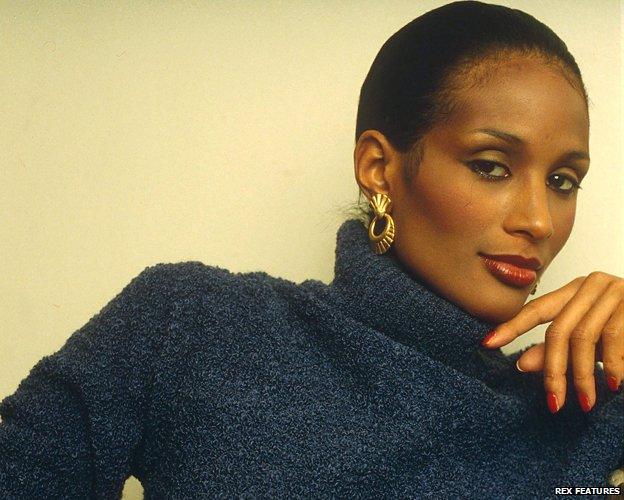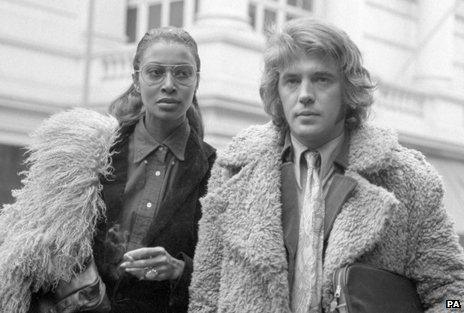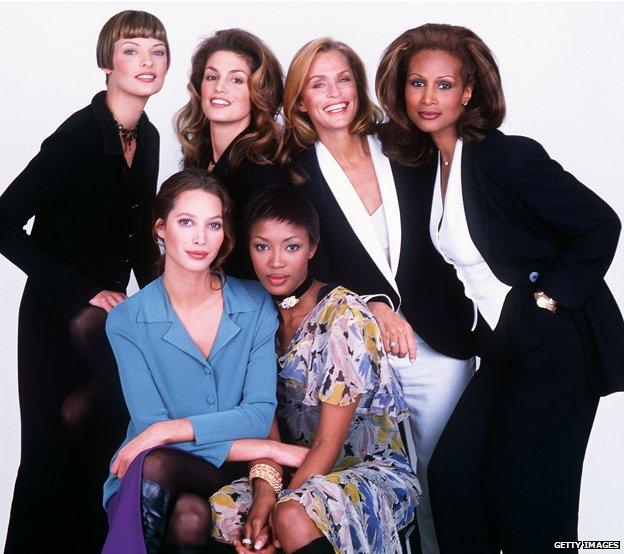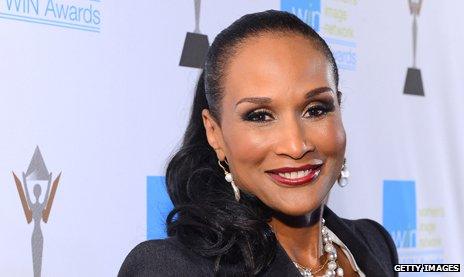American Vogue's first black cover girl
- Published

Model agents told her she'd never make it, hairdressers refused to touch her hair and Kodak didn't even make film that could cope with her skin tone, but somehow 40 years ago Beverly Johnson became the first black woman on the cover of American Vogue.
"You mean there's never been a woman of colour on the cover of Vogue magazine? Are you kidding me? We're in the 1970s."
When Beverly Johnson found out that she'd made the August 1974 cover of the fashion bible she was ecstatic - but also outraged to discover she was breaking a racial taboo for the first time.
At 21, she'd only been modelling for a couple of years and didn't know that her goal - to be on Vogue's front cover - would put her in the history books.
When the picture hit the newsstands - with Johnson, her hair swept back, wearing an unseasonably warm angora cardigan and Bulgari diamond loop earrings - she started getting calls from newspapers and magazines from all over the world.
"That's when I knew it was a big deal, when people told me it was a big deal," she says.
"I was interviewed by people from Africa and from Europe. They were saying, 'It's about time that America woke up!' It was just life-changing."
Johnson grew up in an all-white neighbourhood in Buffalo, upstate New York, largely unaware of the racial tensions elsewhere.
Her mother, an African American from Louisiana, and her father, a Native American, never spoke about race.
"We just learned that all people were good and alike and didn't really know about those kind of biases that exist in the world," she says.
Her first experience of racism came as a young girl when she and a friend rode their bicycles through a different neighbourhood on the border with Canada.
"They started calling us the N-word and throwing bottles at us. We were just stunned," she remembers.
That was the early 1960s. A decade of protests by African Americans had led to the passing of the Civil Rights Act in 1964 outlawing discrimination on grounds of race, colour, religion, sex, or national origin.

Johnson's family worried that Martin Luther King was "stirring up trouble", but Johnson - who entered her teens in 1965 - remembers being mesmerised when she saw him on television herself.
She planned to become a lawyer and went to Northeastern University in Boston to study political science. While there, her friends persuaded her to take up modelling to pay for her studies.
She began to get freelance photo-shoots for Glamour, a magazine bought mainly by young white women, but she still found it difficult to get an agent.
"Everyone turned me down. The Eileen Ford model agency said I was too heavy. Then three days later, they called me back and said, 'Oh you lost so much weight!' but I hadn't lost a pound."
Johnson says this was her first lesson in how the modelling business works - "A lot of BS."
Eileen Ford took her on after realising that she was getting lots of assignments for Glamour magazine, but warned her: "You're never going to be on the cover of Vogue. You're doing all this other work for Glamour and you should count your lucky stars."
This did not put her off - she just dumped Eileen Ford.

Another first

Model Donyale Luna with actor/producer Iain Quarrier
African-American Donyale Luna was the first black model to be pictured on any Vogue cover, external, appearing in British Vogue in 1966
Born in 1945, she died in 1979 of a drugs overdose - leaving a husband and young daughter
The next black model to appear on the cover of British Vogue was Gail O'Neill - 20 years later in 1986, followed by Naomi Campbell in 1987

"To be on the cover of Vogue magazine is where every model wants to be. That's our touchdown, that's our Super Bowl. So I went to another agency," she says.
Meanwhile the editor of Glamour, Ruth Whitney, put her on the cover numerous times. The magazine regularly sent out questionnaires to its readers for feedback and the response to Johnson was unprecedented.
"They asked, 'Would you like to look like this model?' and 'Would you like to be her friend?' And with the other black models they tried to use in the magazine the readers were outraged - and with me they said they would like to actually be me."
Ruth Whitney was amazed. "What do you do to get this reaction?" she asked.
But while Johnson was capturing the readers' hearts, professionals in her industry still needed some persuasion.
"A lot of photographers just didn't see your beauty. Many didn't know how to light you. Kodak had to add darker colours to their spectrum so that the colour came out true," Johnson says.
"The hairdressers were just confused, they had probably never touched a black woman's hair."
Black models were getting work in the 1970s but would generally appear in magazines aimed at an African-American readership, such as Ebony or Essence.
But Johnson saw no reason why beauty should remain segregated.

Linda Evangelista, Cindy Crawford, Lauren Hutton, Beverly Johnson, Christy Turlington and Naomi Campbell photographed in 1993
Then in August 1974 Vogue photographer Francesco Scavullo, photographed Johnson. She didn't know it at the time but it was a cover shoot. In those days, as a model, you didn't know you were going to be on the cover until the magazine went on sale.
"Back then in New York the covers would be the banner all around the newsstand… I saw it and I just stopped in my tracks… Then I made a collect call to my mother on a payphone and told her, and I remember us just screaming and crying."
A year later the editor of American Vogue, Grace Mirabella, was quoted in the New York Times magazine saying, "We don't think about it as a milestone, but we're very proud to have had her there."
Johnson says she can understand why Vogue didn't acknowledge the significance of the picture.
"It was almost an embarrassment to them in 1974 because Europe really took a stand against them saying 'It's about time you did that,'" she says.
But she thinks the magazine still hasn't grasped the magnitude of what it did to change perceptions about race.
"I don't think they understand the impact they had on a nation of women, that they could finally look at someone and say, 'She's me and she's in the magazine and she's beautiful and we're finally accepted in mainstream America.'"
This point is regularly driven home to her even now, 40 years later.
"Every day some woman comes up to me and says how I changed their life… how important it was to see themselves in me."
Johnson admits that at 21, she also had a lot to learn.
"I went on a journey of self-discovery of who I am, what this whole thing about being African-American is… slavery, Martin Luther King, Malcolm X.
"Because I really didn't know… and I just started to get this sense of pride and responsibility."

What happened next

Johnson had a successful modelling career for many years. Most recently she appeared in a reality television show, Beverly's Full House.
The eight-part series documented Beverly's home life as she invited her daughter, son-in-law and baby granddaughter to live with her in Palm Springs.

Beverly Johnson spoke to Witness on the BBC World Service
Subscribe to the BBC News Magazine's email newsletter to get articles sent to your inbox.